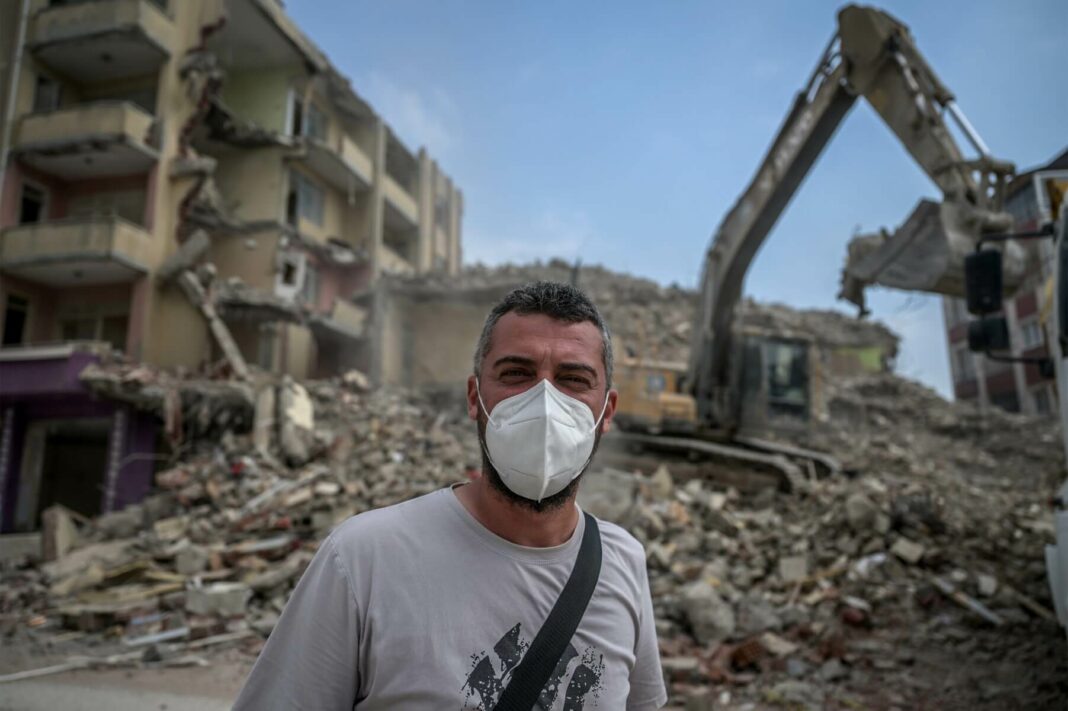Survivors of two powerful earthquakes in southern Turkey are threatened by high levels of asbestos released from the rubble of demolished buildings as reports from environmental groups reveal an alarming amount of the toxic substance in the earthquake zone.
According to a recent report by the Chamber of Environmental Engineers (ÇMO), asbestos was detected in 16 out of 45 solid and dust samples collected from different regions of Hatay, one of the areas hardest hit by the powerful earthquakes in February, Deutsche Welle Turkish service reported.
The magnitude 7.8 and 7.5 earthquakes affected 11 provinces in the country’s south and southeast on Feb. 6, killing more than 50,000 people and leaving millions homeless.
The report, prepared by the İstanbul branch of the ÇMO and titled “The Examination of Asbestos in Construction and Debris Waste After Earthquake: The Case of Hatay,” revealed the extent of the asbestos hazard in the area following the earthquakes.
It was based on an inspection conducted by the ÇMO and a Deutsche Welle team, collecting samples from storage areas, building debris, residential areas, fauna, soil surfaces and the surfaces of vehicles used during the work in the Serinyol, Antakya, Samandağ, Yeşilköy and Defne districts of Hatay on Sept. 2 and 3.
The report showed that asbestos was found in 16 of the 45 samples collected from the five locations in the city and that the asbestos was transported to other cities through vehicles passing through the region.
According to the findings, the earthquake-stricken region is now facing a significant public health crisis that could potentially turn into a new disaster. Hundreds of thousands of people in the region or in contact with the region are at risk.
Utku Fırat, an environmental engineer from the ÇMO who shared the report with the public, stated that waste management practices implemented in the earthquake area were flawed.
“The selection of landfill sites for excavation, the transportation of hazardous wastes, including materials containing asbestos, without proper sorting, the almost nonexistent use of dust suppression systems throughout the region and the lack of measures to prevent dust emission from trucks during waste transportation are among the primary errors,” Fırat said.
Fırat suggested that everyone living in that region and those involved in debris removal operations should be provided with protective masks and encouraged to use them to prevent diseases that asbestos exposure can cause. Additionally, he mentioned that new residential buildings should be built in places that will not be affected by these debris storage areas.
The local residents speaking to DW Turkish also complained about the dust, noting an increase in acute health problems in the region. However, they reported that there has been no health screening conducted by public authorities so far.
The International Federation of Red Cross and Red Crescent Societies (IFRC) in late March warned of the presence of asbestos in buildings affected by the earthquakes, saying it was detected in many buildings, old and new alike, despite the fact that its use was banned in 2010 in Turkey.
The IFRC is an international membership organization uniting 192 Red Cross and Red Crescent Societies.


